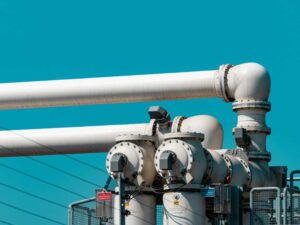Do you feel that regulatory reporting demands are spiraling out of control? You’re not alone, and it’s not without good reason. In tandem with growing reporting requirements, the risk landscape is changing. The 2024 Global Directors’ and Officers’ Survey from Willis Tower Watson reveals that health and safety risks have soared to the top of executives’ concerns.
Against the backdrop of growing reporting requirements, most of which are catalyzed by the climate emergency, it’s no coincidence that health and wellness anxiety is growing in step. Solid reporting is an essential tool for EHS risk prevention and management if we can get our arms around it.
Corporate leaders today must navigate meticulous reporting for total worker health, risk mitigation, EHS management, Sustainability, ESG, and supply chain operations. Stakeholders demand transparency and accountability, pushing companies to continuously enhance their practices. Meeting these demands is essential for maintaining compliance and fostering trust. So, how do you keep up?
Let’s dive into how modern Sustainability & EHS reporting is evolving to meet these new demands.
Total Worker Health: Elevating EHS Reporting with a Focus on Employee Wellness
The focus on Total Worker Health marks a significant shift in corporate well-being strategies transcending workplace hazards.
The concept of Total Worker Health has become a critical aspect of modern EHS management, reflecting a comprehensive approach to employee wellness that goes beyond merely mitigating workplace hazards. According to the Willis Tower Watson survey, worldwide responses saw health and safety jump from fifth place (held in 2022 and 2023) to first as the most important risk to officers and directors from a financial or reputational perspective.
Leapfrogging cyber-attacks, data loss, and regulatory breaches, this move reflects the importance of a healthy workforce for productivity and resilience.
But what exactly is Total Worker Health? Originating from the National Institute for Occupational Safety and Health (NIOSH), Total Worker Health refers to policies, programs, and practices that integrate protection from work-related hazards with efforts to promote overall wellness.
This holistic approach is essential for EHS professionals as it ensures that mental health is given the same kind of consideration as physical safety. The pandemic has made it clear that addressing mental health with the same rigor as physical safety is crucial, leading to the development of comprehensive health programs that benefit employees and organizations alike.
Corporate leaders must integrate detailed health and safety metrics into their reporting frameworks. This involves tracking physical safety incidents alongside mental health outcomes, ensuring that all aspects of worker health are monitored and managed effectively. Collecting and analyzing a broad spectrum of health and safety data—from incident reports to employee wellness surveys—is fundamental to this process. Transparent reporting of this data not only demonstrates a company’s commitment to worker health but also builds trust with stakeholders.
Do you need a tool for incident reporting? Request a demo for our Incident Management application today.
Risk Mitigation: Tackling New Challenges
In today’s unpredictable landscape, risk mitigation has unsurprisingly become a top corporate priority. Despite health & safety’s rise in the ranks, this year’s Global Directors’ and Officers’ Survey saw regulatory breaches hold firm in fourth place.
It’s not exactly news that new threats to businesses are everywhere: geopolitical tensions, cybersecurity breaches, and climate change, to name a few. However, the regulations and sanctions designed to mitigate these threats are becoming increasingly pervasive. This creates a paradox. Companies are finding it challenging to keep up with the escalating regulatory demands intended to shield them, leading to increased anxiety and operational strain.
Modern risk mitigation demands a modern approach. It’s about being proactive, which means identifying potential risks early, assessing their impact, and implementing robust strategies to manage them. Advanced technologies like Generative AI and machine learning will play an indispensable role in years to come, offering unprecedented accuracy in predicting and mitigating risks.
Underpinning these efforts is transparency. Stakeholders need to see how risks are managed. Companies must detail their risk management strategies and outcomes, instilling confidence in their ability to handle crises. In real terms, this means reporting on how risks are identified, what measures are in place, and how successful these measures have been. Integrating risk mitigation into executive reports ensures resilience, operational protection, and stakeholder trust.
Sustainability and ESG: The New Corporate Imperative
The conversation around ESG has shifted from niche to mainstream. Companies worldwide are increasingly held accountable for their environmental and social impacts, with regulatory bodies like the European Union pushing the envelope on stringent sustainability disclosures through directives such as the Corporate Sustainability Reporting Directive (CSRD). In the U.S., forthcoming regulations are set to heighten these standards further.
This shift towards rigorous ESG reporting transcends compliance. Organizations that lead in sustainability often see tangible benefits, including enhanced operational efficiency, better brand reputation, and superior financial performance. For instance, research shows that companies with strong ESG practices can attract investment from socially conscious investors and build greater stakeholder trust. According to EY, investors increasingly believe companies that perform well on ESG are less risky, better positioned for the long term, and better prepared for uncertainty.
Achieving excellence in ESG reporting requires a comprehensive approach. It involves setting clear sustainability goals, tracking progress meticulously, and communicating efforts transparently to stakeholders. Advanced technologies like blockchain and AI are revolutionizing the collection and verification of ESG data, ensuring accuracy and boosting credibility.
The business landscape is evolving, and embracing ESG is now a strategic necessity. Companies that integrate sustainability into their core strategies and reporting practices are better positioned to drive positive change and secure long-term success.
Download a complimentary guide to navigating CSRD today!
Supply Chain Operations: Ensuring Resilience and Transparency
Recent global events have spotlighted the fragility of supply chains. From the pandemic to geopolitical tensions, businesses have learned that their supply chains are vulnerable. But what does it take to build resilience in this vital area? It’s about more than just managing risks reactively—it’s about ensuring that your operations are ready to weather any upcoming storm. This means diversifying suppliers, increasing inventory buffers, and leveraging advanced analytics for predictive insights. Harnessing the power of technology to anticipate and respond to disruptions is critical for maintaining operational continuity and efficiency.
Transparency in supply chains is equally essential. Today’s stakeholders demand to know where products come from and how they are made. This level of visibility builds trust and ensures compliance with increasingly stringent regulations. Technologies like blockchain are revolutionizing this space by providing an unalterable record of transactions, making it easier to track products from origin to delivery.
Moreover, sustainable and ethical sourcing practices are no longer optional. They are imperative for meeting ESG goals and satisfying consumer expectations. Companies are now increasingly required to report on the environmental and social impacts of their supply chains. Adopting sustainable sourcing practices and ensuring fair labor conditions are crucial steps in this direction.
Integrating supply chain data into executive reports is a strategic necessity. Collecting comprehensive data on operations, analyzing it for actionable insights, and transparently reporting it to stakeholders can demonstrate a company’s commitment to resilience and ethical practices. This not only fosters trust but also secures long-term success.
Mastering the Complexities of Modern Reporting
The demands of modern regulatory reporting are daunting. Integrating EHS, risk management, sustainability, and supply chain resilience into company operations is no small task. However, meeting these challenges head-on is crucial for building trust, enhancing reputation, and ensuring long-term success.
It’s not a popular argument to make against the backdrop of the preservation of worker health and the planet, but like it or not, reporting does constitute additional administrative and financial burdens that need to be considered in the context of business operations. The good news is that reporting doesn’t have to be to the detriment of profit – quite the opposite; advancements in technology are making it easier to manage. Companies that embrace these innovations and master comprehensive reporting practices will find themselves rewarded with greater efficiency and profitability.
Eager to learn more? Contact us today and explore some of these innovations first-hand.



